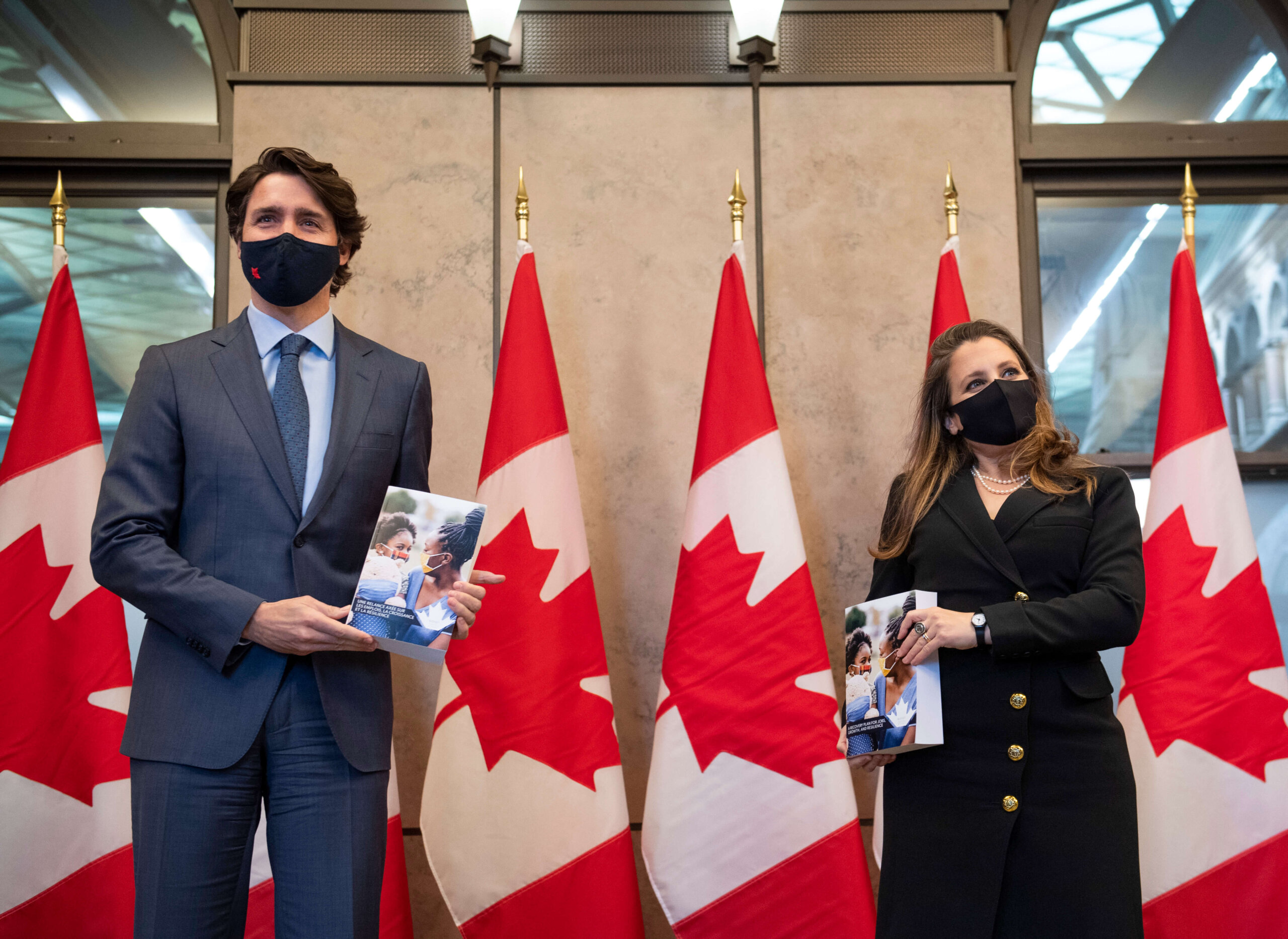After the pandemic wiped out decades of progress for gender equality in Canada, most especially in terms of women’s participation in the workforce, the Liberal government’s budget this week promises an “inclusive, intersectional recovery that builds a truly equitable society.” They’re bold words, but if you look through the budget documents, you’ll find that Trudeau’s Liberals have been putting the work in for LGBTQ2S+ Canadians—more than any other government has in our history.
There is dedicated funding for queer communities in two particular tranches of the budget, which appears to be new money and not a re-announcement of previous initiatives. One line item directs $15 million over three years to the department of Women and Gender Equality to create a new LGBTQ2 Project Fund, the goal of which is to support “community-informed initiatives” that are aimed at overcoming issues facing queer communities, such as mental health services or employment support. (The Liberals previously offered up $15 million, divided among 76 organizations, as part of its LGBTQ2 Community Capacity Fund project.)
The second envelope directs $7.1 million over three years to Canadian heritage to support the work of the government’s LGBTQ2 Secretariat, whose function is to co-ordinate work across government on queer issues. The goal of these funds is the development of an LGBTQ2 Action Plan, which Minister of Diversity and Inclusion and Youth Bardish Chagger’s mandate letter says “would guide the work of the federal government on issues important to LGBTQ2 Canadians.”
There are certainly questions as to whether these funds—particularly the LGBTQ2 Project Fund, with its ambitious goal to help support dozens of community organziations with a relatively small sum of money—will be enough to address the needs of queer communities. “After decades of chronic underfunding of our communities and the services that keep them healthy, we are disappointed in the continued under-resourcing of 2SLGBTQ+ community organizations,” wrote one LGBTQ2S+ consultation organization in its analysis of the budget.
“There are certainly questions as to whether these funds will be enough to address the needs of queer communities.”
But the more interesting part of the budget might actually be Annex 4, the “Gender, Diversity, and Quality of Life Statement.” This section isn’t about funding but rather the data to help better serve communities. It comes from a Gender-Based Analysis Plus process, used by the government to understand how Canadians’ various and intersecting identities—including ethnicity, age, sexual orientation, gender identity, income level and so on—affect our daily lives. The framework has six gender equity goals, and there are some fascinating insights about queer communities in Canada.
A section on gender-based violence and access to justice cites a 2016 survey that found lesbian and bisexual women reported higher rates of sexual harassment at work than straight women. Meanwhile, 69 percent of trans individuals reported inappropriate workplace behaviour in 2018—compared to 23 percent of their cisgender peers. Gay men, lesbians and bisexual people reported higher rates of childhood abuse than straight people, and 59 percent of trans people were more likely to report having experienced physical or sexual assault, as compared to 37 percent of cisgender people. And those numbers could be higher because this data is likely underreported.
When it comes to mental and physical health outcomes, bisexual women reported the lowest rates of positive mental health in the 2017-18 survey, followed by bisexual men. Gay men and lesbians had higher rates than bisexuals, but lower than straight women, who were still lower than straight men. Trans individuals had significantly higher rates of negative mental health, and 45 percent had seriously contemplated suicide (as compared to 16 percent of cisgender people). The report also noted that in 2016, gay men and bisexual women reported regularly participating in sports less often than straight men and women.
“There is a growing awareness that our communities have different needs, and governments must contemplate these differences.”
Under the education and skills development section, it notes that between 2015 and 2018, gay men and lesbians were more likely to have post-secondary qualifications than their straight peers, while bisexual men and women were less likely to have a post-secondary qualification. Under the economic participation and prosperity section, it stated that, in that same 2015 to 2018 period, lesbians were more likely to work than their straight peers, while gay men were slightly less likely to work than their straight peers. Bisexual men and women had the lowest employment rates.
The fact that the government compiled this research as part of the analysis of their plans and their potential outcomes shows that there is a growing awareness at the federal level that our communities have different needs, and that governments must contemplate these differences while creating programs designed to help Canadians. Support programs need to ensure that they can reach our communities, and working on alleviating poverty means dealing with the barriers that keep us away from economic opportunity. If the budget is really one about inclusive growth, then it’s important to know where those barriers are—and this kind of analysis is a good start.
More to the point, it would seem to me that queer communities and issues are deeply ingrained in the analytical framework that the government has used as part of its intersectional and feminist recovery plan. It’s a recognition that we are owed more than just lip service. A government as fond of patting itself on the back as this one could have rested on their laurels about same-sex marriage or the gender identity bill, but so far they aren’t.
There is plenty more work to be done before all queer and trans people have achieved substantive equality in Canadian society—beyond formal equality under the law—but that work has to start somewhere. I do think it’s a mark of progress that the government sees us and our challenges in how it seeks to help Canadians, and that it’s looking for places where it can reduce our barriers to participation.


 Why you can trust Xtra
Why you can trust Xtra


